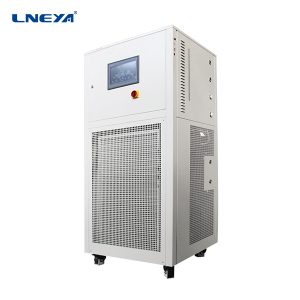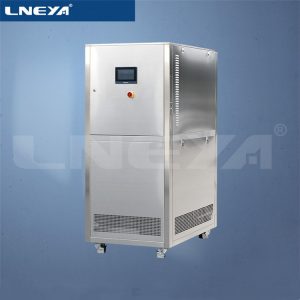Semiconductor heating and cooling thermostat compressor fault detection instructions
In the semiconductor heating and cooling thermostat, the compressor is one of its core components. Once it fails, it will affect the operation of the whole system. How to solve the fault is better?
The faults of semiconductor heating and cooling thermostat compressors can be divided into motor faults and mechanical faults (including crankshafts, connecting rods, pistons, valve plates, cylinder head gaskets, etc.). Mechanical failure often causes the motor to overload or even stall, which is one of the main causes of motor damage.
The compressor motor load includes the load required to compress the gas and the load required to overcome the mechanical friction. If the pressure ratio is too large, or the pressure difference is too large, the compression process will be more difficult; the frictional resistance caused by the lubrication failure will increase, and the motor stall in extreme cases will greatly increase the motor load. Lubrication failure and increased frictional resistance are the primary causes of load anomalies.
The short circuit caused by the metal shavings of the compressor, the metal chips trapped in the windings are the main culprit for the short circuit and the low grounding insulation value. The normal vibration of the compressor during operation and the twisting of the winding by the electromagnetic force at each start-up will promote the relative motion and friction between the metal chips interposed between the windings and the winding enameled wire. Sharp edges and swarf can scratch the enameled wire insulation and cause a short circuit.
Compressor contactor problems, contactors can meet demanding conditions such as fast cycling, continuous overload and low voltage. They have a large enough area to dissipate the heat generated by the load current, and the choice of contact material prevents soldering at high currents such as startup or stall. In order to be safe and reliable, the compressor contactor must simultaneously disconnect the three-phase circuit. The method of disconnecting the two-phase circuit is not recommended.
The rated current of the compressor contactor must not be lower than the rated current on the compressor nameplate. Contactors with small specifications or poor quality cannot withstand compressor start-up, large current surges during stalling and low voltage, and are prone to single-phase or multi-phase contact jitter, soldering or even falling off, causing motor damage.
Semiconductor heating and cooling thermostat compressors may have more faults. It is not recommended for users to solve them themselves. It is recommended to contact the manufacturer for after-sales service.

Related recommendations
-
Lneya Semiconductor High Precision Temperature Control System Description
1310Semiconductor high-precision temperature control systems are currently produced in the semiconductor industry with highly complex performance. Here is a description of the semiconductor high-precision temperature control system. Along with large-s...
View details -
About the components of the reactor chiller refrigeration heating circulator
1235The reactor chiller refrigeration and heating circulator is used to control the heater and cooler, adjust the temperature, and maintain the stable temperature of the material. Through the circulating medium, the temperature of the material can be ...
View details -
Introduction of distillation principle and temperature cycle control device
943Distillation is a common method for purifying liquid substances and separating mixtures. The boiling point of the compound can also be measured by distillation, so it also has a certain significance for the identification of pure liquid organic co...
View details -
Maintenance of Glycol Cooling Heating Control System
2013Apart from the attention needed during the daily use, the regular check and maintenance of Glycol Cooling Heating Control System are also very important. In order to help all of you learn to use Glycol cooling heating more efficiently, LNEYA Ref...
View details
 LNEYA Industrial Chillers Manufacturer Supplier
LNEYA Industrial Chillers Manufacturer Supplier














